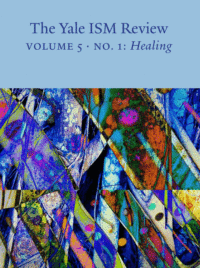Lydia Dugdale
“I am so sick of the assumptions surrounding a good death,” a philosopher colleague raged to me recently. “They’re so Christian. It’s ridiculous to think that a good death means forgiveness and reconciliation at the deathbed. People should be able to go to the grave shaking their fists. And if this is what they want, then it’s a good death for them.”
A group of us had been sitting around a table at an interdisciplinary bioethics conference talking about whether hospice facilitates dying well, and our colleague’s outburst caught us off guard. Was she right? Is dying well—that is, healing at the end of a life—nothing more than a self-scripted dying plan? Is it wholly subjective? Or might there exist some standard criteria, some shared moral script by which we can experience healing even as we are dying?
These questions are not new, of course. The writer and academic Michael Ignatieff notes that since at least the Enlightenment philosophers have been trying “to imagine the moral logic of a society without confessional unity of shared belief.”[1] With regard to dying well, we Westerners don’t hold common assumptions. We lack a moral vernacular for human finitude. Ignatieff writes:
Most other cultures, including many primitive ones whom we have subjugated to our reason and our technology, enfold their members in an art of dying as in an art of living. But we have left these awesome tasks of culture to private choice. Some of us face our deaths with a rosary, some with a curse, some in company, some alone. Some die bravely, to give courage to the living, while others die with no other audience than their lonely selves.[2]
Dying well seems to have become a matter of personal wish fulfillment.
It is curious that Ignatieff, himself “not a churchy guy,” expresses dismay over confessional disunity.[3] If asked, he would likely disagree with my philosopher colleague. He would disagree not with her bemoaning a good death as necessarily a Christian death but with her suggestion that a good death be individually-crafted and subjective.
Ignatieff finds value in the way that family and community help people understand themselves and care for one another.[4] Such communities cohere because of a shared moral logic that is often religious in nature.
Doctors can make use of virtually unlimited technology to thwart death but are entirely powerless once death sets in. Who among us desires such a position of vulnerability?
But religion is precisely what was demoted by the Enlightenment. As Ignatieff puts it, religion’s great enemy is neither science nor unbelief, “but rather the silent and pervasive plausibility of earthly need as a metaphysics of ordinary life.”[5] Western society has come to act as if all that matters is satisfying the desires of our bodies—in living and in dying.
As a medical doctor, I am aware that my profession has reified corporeal appeasement. The physician attends to the physical, the material. Gone are the days of medice cura te ipsum[6] from the Gospel of Luke, chapter 4. No longer healers of the holistic variety, we doctors attend to earthly needs as our metaphysics of ordinary practice. And physicians attend all the more doggedly to the physical the nearer death looms. Doctors can make use of virtually unlimited technology to thwart death but are entirely powerless once death sets in. Who among us desires such a position of vulnerability?
Even if medical practices that support living and dying have evolved to focus on the strictly biologic, history begs us to remember that living and dying were not always this way. For more than five hundred years, an ars moriendi or “art of dying” body of literature dominated the cultural landscape of the West. The central idea of the ars moriendi was that dying well takes work—preparation that could occur over the course of a lifetime.
The story of the ars moriendi starts in the mid-1300s, when the Bubonic Plague struck Western Europe. The plague ravaged with such ferocity that the majority of the population is thought to have succumbed. The death bell tolled with little warning, and death came quickly.
Europe was devastated by the loss, but most bewildering, perhaps, was the death of the priests. The cleric’s collar conferred no special immunity to the Plague, and many church leaders sacrificed themselves on the front lines of caring for the sick. Who, then, was to guide the dying as they exited the land of the living? Who was to administer last rites, to bury the dead? The laity was perplexed and sought ecclesial guidance.
Lovers of church history well know that the fourteenth century’s latter half was not the church’s finest. In what has come to be known as the Western Schism, two—and later three—men simultaneously claimed to be pope. This deep division meant that the church was ill-equipped to respond pastorally to the concerns of the laity.
The threat of death never drifted far from the collective imagination. When the Council of Constance was convened from 1414 to 1418 to repair the schism, it also sought to address pressing pastoral concerns. Chief among them? The preparation for death.

As early as 1415, an ars moriendi handbook began to circulate. No one knows who wrote it, but its contents drew from earlier work by theologian Jean Gerson and the liturgical material of Friar Laurent, Henry Suso, and Dirk van Delft. This art of dying handbook offered concrete instruction to the dying and those who care for them. The manuscripts were quickly circulated, translated, and adapted by other religious and even non-religious groups.
The theologian Allen Verhey, in his book The Christian Art of Dying, notes that the early variations of the ars moriendi generally contained six parts:[7]
1. A commendation of death;
2. A warning regarding the temptations the dying will confront (to lose faith; to despair; to become impatient, proud, or greedy) along with advice on how to resist them;
3. A brief catechism affirming faith;
4. Prayers for use by the dying;
5. Counsel to the entire community to attend to preparation for death as a matter of first importance; and
6. Prayers the community could offer on behalf of the dying person.
The ars moriendi commanded reflection on finitude and offered concrete instruction on how to think about one’s own death and the death of another. It was not just a medieval phenomenon. It formed the basis of endless books on pastoral care and continued to serve as a reference for both Catholics and Protestants after the Reformation.
The ars moriendi was not perfect. In fact, Verhey finds it “not an altogether satisfactory alternative” to modern medicalized approaches to dying because its Platonic leanings threatened “a premature alienation of people from their bodies.”[8] The ars moriendi, Verhey maintains, went too far in its commendation of death.
Despite theological shortcomings, the ars moriendi does prove a satisfactory alternative to the Enlightenment-inspired do-it-yourself, death-on-my-own-terms versions of dying described by both my philosopher colleague and Ignatieff. Verhey rightly acknowledges this, applauding the ars moriendi’s “invitation to faith and faithfulness in the face of death.”[9]
One way that the dying and their communities could exercise such “faith and faithfulness” was by cultivating the virtues necessary to overcome the temptations that lead to dying poorly. Early versions of the ars moriendi noted that these virtues included faith, hope, and love, as well as patience, humility, and “letting go.”
Verhey expounds on these at length, but I will highlight only the first three. Faith was the proposed antidote to the temptation to disbelief, hope for despair, and love for the temptation to impatience, because “love is patient,” as 1 Corinthians 13 tells us. Faith, hope, and love are inextricably intertwined. As Verhey writes, “Faith and faithfulness exist as love; faith ‘works’ as love (Galatians 5:6). And love is the mark of the new creation, the good future for which we hope.” They go together.[10]
Why do I make this point? Because, for the Christian, love never ends (1 Corinthians 13:8). As Verhey puts it:
[L]ove is the mark of God’s good future. Or, as John says, “We know that we have passed from death to life because we love one another. Whoever does not love abides in death” (1 John 3:14). So, even as we lie dying, love is a sign of the resurrection, a testimony that we have a share in the victory of God over death, a witness that we participate already in God’s good future.[11]This is precisely why deathbed acts of confession, forgiveness, and reconciliation are so important. They signify that a person abides in life and not in death. They point to victory and hope and healing.
Of course this is not to say that the only way to die well is the Christian way. In the case of my philosopher colleague, much hinges on what she means by dying and well and even Christian. But the ars moriendi offered one set of practices for addressing what Ignatieff calls “some of our most durable historical needs—for consolation and ultimate explanation.”[12] No one has to choose to die the way of the ars moriendi; we are free to choose to die any way we please.
And choose we will. Some will choose to embrace an art of dying as skeptics or atheists. Others will approach the art as believers. Still others will dismiss the ars moriendi and instead go to the grave shaking their fists at death itself. We are free to choose our good death. But this freedom comes at a cost. Ignatieff says, “We have Augustine’s freedom to choose, and because we do, we cannot have the second freedom, the certainty of having chosen rightly. That certainty, Augustine believed, could only be granted by the gift of Grace.”[13]
 Lydia Dugdale, MD, MAR (ethics) is a physician and ethicist at Columbia University Vagelos College of Physicians and Surgeons. She is editor of the book Dying in the Twenty-First Century (MIT Press, 2015) and author of the forthcoming book The Lost Art of Dying (HarperOne, 2020).
Lydia Dugdale, MD, MAR (ethics) is a physician and ethicist at Columbia University Vagelos College of Physicians and Surgeons. She is editor of the book Dying in the Twenty-First Century (MIT Press, 2015) and author of the forthcoming book The Lost Art of Dying (HarperOne, 2020).
[1] Michael Ignatieff, The Needs of Strangers (New York: Picador, 2001), 79.
[2] Ignatieff, Needs, 76–7.
[3] https://www.theglobeandmail.com/opinion/michael-valpy-on-michael-ignatieff/article1378481/
[4] https://www.theglobeandmail.com/opinion/michael-valpy-on-michael-ignatieff/article1378481/
[5] Ignatieff, Needs, 77.
[6] “Physician, heal thyself.”
[7] Allen Verhey, The Christian Art of Dying: Learning from Jesus (Grand Rapids, MI: Eerdmans, 2011), 87.
[8] Verhey, Christian Art, 174.
[9] Verhey, Christian Art, 174.
[10] Verhey, Christian Art, 277.
[11] Verhey, Christian Art, 278.
[12] Ignatieff, Needs, 135.
[13] Ignatieff, Needs, 135–6.
—
This material is licensed under an Attribution-NonCommercial 4.0 International License.
Recommended Citation: Dugdale, Lydia (2019): “At the Hour of Our Death” The Yale ISM Review: Vol. 5: No. 1, Article 12. Available at https://ismreview.yale.edu
